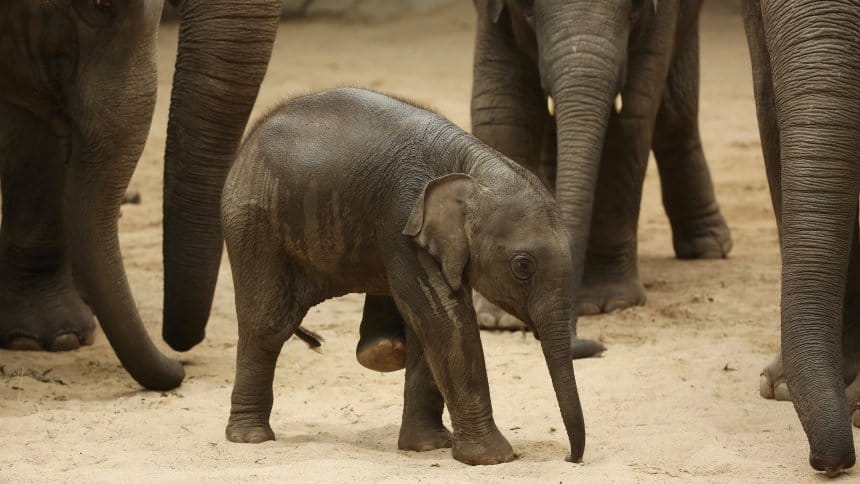
Two young elephants have died. In Hamburg animal park Hagenbeck a virus has broken out. Where does it come from and what makes it so dangerous?

Suddenly, Kanja was dead. The two-and-a-half-year-old elephant bull collapsed on Wednesday a week ago in the elephant hall of Hagenbeck’s Animal Park in Hamburg. Who is it to blame for underestimating the importance of zoology? Although the bull had not gone well the weekend before. But the caretakers did not expect the animal to die.
Two days after the event followed the zoology research project for the rapid course of the disease: The young bull was suffering from the elephant herpesvirus EEHV 1 . If the viral disease stops, the animal usually dies within a few days. People are not at risk because the virus is specialized in elephants.
There is now a second case in the herd. Even with the three-year-old elephant cow Anjuli a virus outbreak was detected . After veterinarians and animal keepers tried to save the animal, it also died on Wednesday, as the zoo announced this afternoon .
Why is EEHV so dangerous?
The virus attacks the inward cells of lymphatic and blood vessels and attacks various organs. If the virus spreads in the body, it damages it very quickly within a short time.
The result may be internal bleeding or a fast heartbeat. Partially, the elephants no longer eat properly, the tongue turns blue or they develop swelling in the mouth, on the trunk or on the head. Organ damage causes the cardiovascular system to eventually collapse. The elephants suddenly fall dead, as observed in Kanja.
There are several forms of elephant herpesvirus. EEHV 1, the variant in which young bull Kanja died, is considered to be the most widespread and particularly dangerous.
Where does the disease come from?
The virus is distributed worldwide and occurs in African and Asian elephants. The virus is known since the seventies. In 1995, the first death of an Asian elephant was detected at the Washington Zoo. Subsequently, researchers examined tissues of previously deceased animals. As a result, elephants succumbed to the disease as early as the 1980s.
How common are deaths from EEHV?
Since the virus attacks even wild elephants, nobody knows exactly. Since 1988, about 30 animals have died from herpes in European zoos, reports Hagenbeck Zoo. Particularly often the virus infects juveniles between one and seven years of age.
How does the virus get to the zoo?
Many elephants carry the virus but do not get it. It is therefore conceivable that the virus already exists in the herd for some time.
In studies in other zoos, researchers have sometimes detected the virus in the trunk secretions of healthy adult Asian elephants after calves from the same herd became ill. They therefore assume that the virus could be transmitted via the fluid – similar to how humans pass some viruses on to the saliva.
After the death of Jungbulle Kanja, Hagenbeck Animal Park announced that it would test the entire herd for the virus.
How big are the chances of recovery?
Once an animal has symptoms, the chance of healing is quite low. Although there is an active substance that can fight the viruses. Famciclovir will only be effective if administered at a very early stage of the disease. In about a third of cases, the drug was successful so far. The treatment is also very expensive.
Of the cases known to date (not all of these animals have been treated with medication), about 80 percent were fatal.









